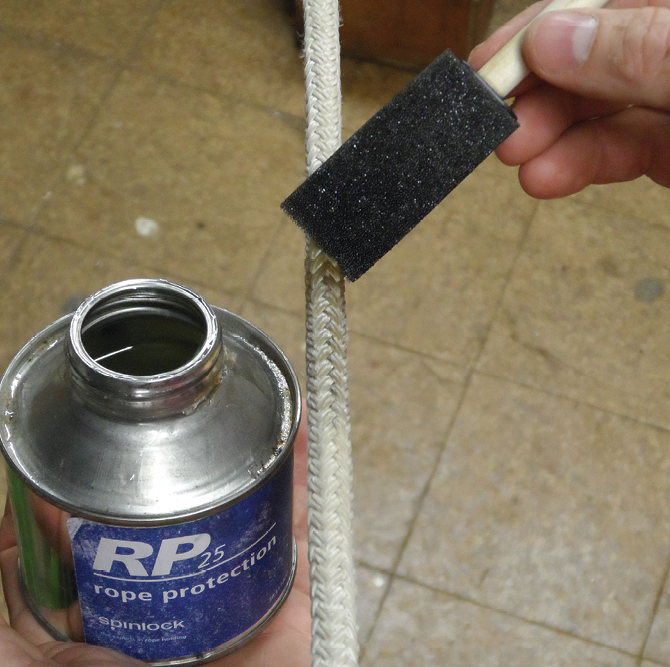New lines run fast. They fly through tackles and tangles fall right out. But they are also hard to hold in our hands, on winches, and even in rope clutches. Never fear, there are solutions.
Gloves. Not all sailing gloves are created equal. Some last longer, some protect your tendons better, and some have enhanced grip, often advertised as “sticky.” We like the new Gill Pro gloves (they take a little breaking in), Ronstan Sticky Race, and Harken Reflex. Older gloves lose their grip over time. The down side of enhanced grip gloves is that they can feel a little too sticky when coiling rope, but the first day tackiness soon diminishes, and you quickly adjust and lighten your touch (our recommendations have all been in use at least 3 years).
Increase the Friction. This may sound draconian, but race crews often attack new line tails with detergent and even sand paper. Scrubbing the tail in detergent/degreaser will remove spinning lubes, improving grip. Yes, this will slightly increase wear and friction in the portions that run through blocks, so don’t wash the whole rope. (Don’t machine wash new lines—it can herniate (see “What is the Best Way to Clean Marine Rope,” PS August 2011). If that is not enough, lightly sanding the tail with 200-grit paper can roughen up the surface just enough.
Worn Clutches and Winch Drums. Older clutches suffer from cam wear. Press out the pivot pin with a C-clamp, socket, and smaller pin, and replace the cams (rebuild kit). Winch drums also wear, but most often adding an extra turn solves that. Winch drums can also be re-textured or you can do it yourself (report upcoming), though this is seldom called for.
Undersized Lines Slip in Clutches. Did you downsize to a high-modulus line? Is the new line softer under compression (some cores fill the cover more than others)? Did you change brands? There can be as much as 20 percent variation in diameter between brands and models. Consider adding a cover, or if the difference is small, pulling a thin, supplemental core inside the vital section to bulk it up.
Coatings. Dyneema covers can be slippery. With the rise of Dyneema cores, covers slipping on the core is a common problem in jammers. In extreme cases, the line strength is reduced to little more than the cover, and the cover can bunch up awkwardly, jamming in blocks and at the clutch entrance. Spinlock developed RP25 specifically to lock the cover to the core, but it also increases grip in jammers. (See “UV, Chafe Protection,” PS March, 2015). We don’t recommend it on winches or where the line is frequently handled, but we have used it under jammers and on chafe-prone furler lines with great success. It is a thin, solvent-based product that you brush on and allow to soak in deeply. It takes several days to fully dry, but it works wonders.
We have also recommended Yale Maxijacket for rope chafe, and it will work in this application, but it is stiffer and probably overkill. Apply a thin coating and rub it in. That said, coating the line’s surface jacket for a few feet where a jammer locks at full hoist should not be a problem. We recommend washing the section of rope to be coated to remove spinning lubes added during manufacturing. If it has been in the weather a few months, no washing is needed.
If you take any or all of these measures, slippery lines will be a thing of the past.

































